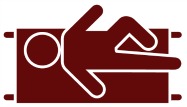These doctors accept no insurance -- so they don't have to have an army of coders working to fight insurance companies over every dime. For the most part, these small monthly fee provides pretty flexible access to the primary care provider - and avoids unnecessary ED visits.
They encourage their patients to have a catastrophic or high deductable insurance to cover hospitaliazations and major problems, meanwhile the monthly retainer covers the rest.
It's a trend happening on the high end and on the lower end of primary care, according to a recent article in Bloomberg/Businessweek.
"Some health policymakers are encouraged by this trend. They think an increase of direct-pay doctors—especially affordable ones—could lead to better health care in the U.S., which has the highest costs and some of the worst outcomes of any wealthy nation. “I think it’s great,” says Kevin Schulman, a professor of medicine and business administration at Duke University. “We’re rediscovering that if we just ask people to pay for services, we could provide them with better value. Primary care is affordable.”Others worry that the growth of concierge medicine will mean the affluent receive high-quality care while the rest of the country struggles to be seen by fewer and fewer doctors. “It is a step towards a two-tiered health-care system: a system where the rich get first-choice care and the not-so-rich get second-choice care,” says Kathleen Stoll, deputy executive director of Families USA, a health-care consumer advocacy group."
The good news doctors can run a primary care clinic with a lot less overhead and can spend a lot more time with each patient. The bad news is each doctor has to see A LOT fewer patients to get the same income. In fact, MDs may be able to drop their patient list by 80 % and still make the same money, with a higher job satisfaction.
Which, of course, just points out the problem with our healthcare system. The doctor I heard interviewed made a good analogy with car insurance. We buy car insurance to fix the car when it is broken, we don't expect that insurance to pay for changing the oil and rotating the tires and all the things that keep the car from going in the shop in the first place. So maybe primary care should work the same way.
Moreover, if this offers a path for primary care doctors to see more patients with fewer administrative headaches, maybe more doctors will train for primary care.
The interview I heard:New Trend In Health Insurance: Low-Cost Concierge Medicine http://hereandnow.wbur.org/2012/12/10/concierge-medicine-health-care
Worth reading: Is Concierge Medicine the Future of Healthcare http://www.
The Looming Doctor Shortage: http://www.

